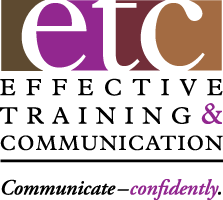It’s time to consider Best-in-Class strategies for handling audience questions. What they ask and how you respond can make or break your credibility, impact your confidence and influence your outcomes.
Recalling your thorough planning process, you should be able to anticipate 90% of the questions 90% of the audience will ask 90% of the time. Not bad odds for sure. Your Sub-Points can even be phrased as questions.
To achieve a higher level of audience-centricity, answer as many of those important questions as you can during your presentation. Borrowing from military strategists and chess masters here, the best defense is a strong offense. By dealing with anticipated questions – especially the difficult ones – up front, you display confidence and a higher level of audience focus. But what about those questions you didn’t answer up front or anticipate?
Presenters generally have two strategies for handling audience questions – holding them until the end of the presentation or inviting them anytime. Each has relative advantages and disadvantages for presenters.
Questions at the End
This is clearly an audience management tactic, especially useful for less experienced or confident presenters or when the topic is controversial. The advantages include:
- Limiting interruptions and getting off track.
- Allowing the presentation to disintegrate into confrontations or arguments.
- Avoiding dealing with questions that will be answered during the remainder of the presentation.
- Controlling your time.
There are disadvantages, however:
- Questions are a form of feedback about the clarity or focus of your message. Holding them until the end limits your capacity to deal with that feedback.
- People don’t like to be made to wait and some will interrupt with questions no matter what you ask them to do.
- Most importantly, the audience remembers most what they hear last. No matter how smooth and focused your presentation – and especially your summary – is, your Q&A will automatically be less so. It’s almost anticlimactic, especially after a stirring summary.
- And what if no one has a question, or forgot the one they wanted to ask. That painfully long pause between ‘Any questions … ‘ and ‘Thank you.’ can be unnerving.
Questions Anytime
Here, it’s a presenter image tactic, suggesting that you can handle anything they can throw at you and almost daring them to try. Not something for the rookies or faint of heart. Besides projecting that image of confidence, other advantages include:
- Treating questions as feedback and being able to revise plans in midstream.
- Being perceived as more audience-friendly and responsive.
- Encouraging more dialogue and audience engagement.
- Helping you evolve from ‘formal speaker’ to ‘conversational facilitator’.
As enticing as these advantages might be, they come with a price tag:
- Greater likelihood to get off target, especially early on.
- Great chance of going over time limits.
- Losing control, especially with very vocal, opinionated or discourteous people.
- Encountering questions about Sub-Point C’s content during Sub-Point A.
So, which strategy do you choose? Each has relative advantages and disadvantages and requires planning and practice. Not an easy decision, because neither works best for all presenters, all messages and all audiences. Here are two ways out of this dilemma, two hybrid strategies that involved the best features of both approaches.
Questions Before the Summary
As indicated, one major disadvantage of holding questions until the end is that it’s almost anticlimactic and even counter-productive if the questions get ugly or your answers become verbose or clumsy. Here’s how to deal with those concerns, while still maintaining audience control and time management:
- Indicate in your introduction that there will be plenty of time for questions at the end of your presentation.
- After you wrap up your last Sub-Point, pause and indicate that it’s time for questions.
- Answer them as needed, indicating when there’s time for one or two more. You timed your Summary, so you know how much time to allow and still end on time.
- Pause briefly, then segue into your Summary with a brief transitional phrase.
- In so doing, you still end with your well-planned and practiced summary, not the answer to the last question someone asked.
Questions After Each Sub-Point
Accomplish similar results by inviting questions after each of your three or four Sub-Points. Simply indicate in your Introduction that you’ll invite questions throughout the presentation. This strategy is especially effective with a team-delivered message. Each presenter invites questions at the end of his or her part and then transitions to the next speaker.
This is even more audience-centric because they don’t have to wait until the end of the entire presentation to ask questions about Sub-Point A or B. It also requires effective time management and audience control. And you still end the entire presentation with your powerful Summary.
While neither of these ‘Best-in-Class’ hybrid strategies will eliminate audience members from interrupting, asking a question whenever they want or behaving badly, they are effective tools well worth adding to your Presenter Tool Kit.
